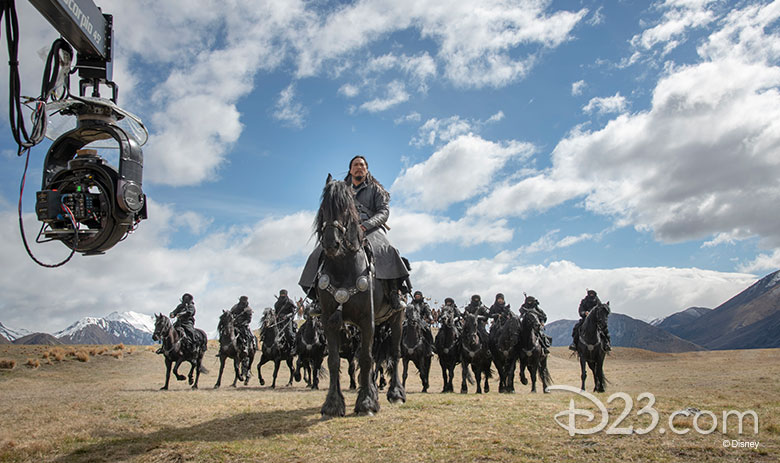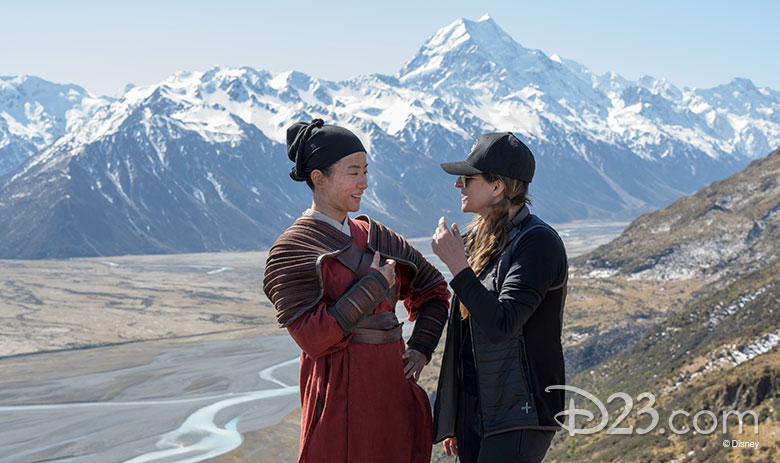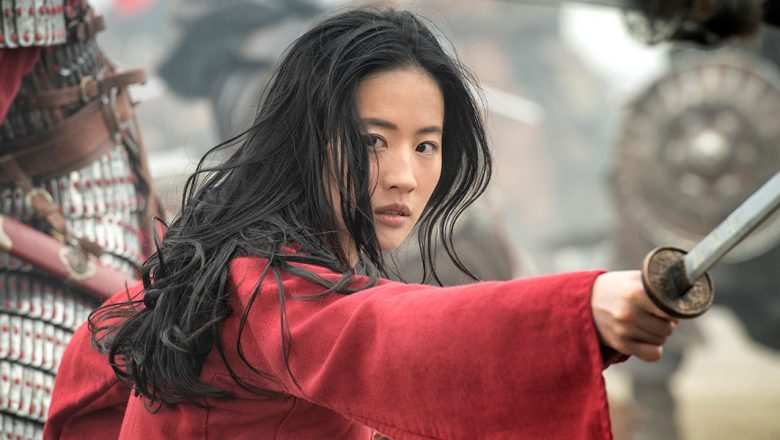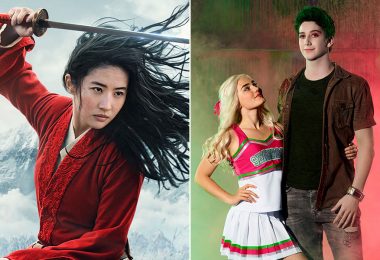By Bruce C. Steele
Nothing sets the new live-action Mulan apart from Disney’s classic 1998 animated feature quite like the sight of dozens of horses in action during the filming of a battle scene. Animated horses require just pen and ink, with perhaps a CG assist, but real horses need 24-hour care, tons of feed, and dozens of trained riders who can look convincingly like ancient Chinese and Rouran warriors.
Gathering these elements together on a river plain in New Zealand, where the battle scenes were being filmed in early spring, was no small task. What had been a remote ranch along the Ahuriri River on the South Island basically had to be turned into a Hollywood backlot in just a matter of weeks. Think a John Wayne western, only with more horses and with a Chinese fort in place of the tumbleweed town—Mulan’s army training scenes were filmed just 10 kilometers up the river from the cinematic battleground.

Director Niki Caro said that her team had to gather “more than 800 people in our cast and crew, including around 100 horses,” for the four-week location shoot—part of a filming schedule that included other New Zealand locations, as well as shooting on site in China and at an Auckland, New Zealand, production studio.
“New Zealand is spectacular, and has been well used by many movies,” Caro said. She fell in love with the stunning snow-capped mountain scenery around the Ahuriri as soon as she stepped out of the helicopter that she and her team were using to scout locations—in part because the area had not been used in previous epics shot in New Zealand, such as the J.R.R. Tolkien trilogies, the Chronicles of Narnia films, and Pete’s Dragon. For the battle shoot, she spent a month living in the valley, commuting daily from a lodge a few kilometers upriver to the countless trailers that made up the location headquarters.
The horses had their own digs—corrals constructed just south of the trailer village. They were being cared for by nearly 50 wranglers, plus nighttime security staff. At least one wrangler also needed to be on hand 24 hours a day, “feeding them and checking on them,” said New Zealand horsemaster Wayne McCormack during the shoot. Filming lasted 10 hours a day, six days a week, but the horses needed to be prepped well before the start of the workday and pampered after each day’s wrap. In short, “the horse department works long hours.”
The equine team “started prepping months and months and months ago,” McCormack said. As he spoke, he was standing on a rise above the valley while a camera car far below tracked a few soldiers on foot who had fled a barrage of horse soldiers attacking their forces—just one of many scenes in which horses play a key role.
Most of the horses were native to New Zealand, McCormack said, but some came from “across the ditch”—New Zealand slang for Australia. The stunt riders came from even farther away: 65 from Mongolia and another 45 from Kazakhstan. All underwent weeks of training to learn to portray Chinese soldiers, in the army with Mulan, or the invading Rouran forces, under the leadership of Bori Khan (Jason Scott Lee).
“The Rouran are a little bit more rough around the edges,” McCormack says. “The hero guys are more upright and have a little more uniform style of riding.”
It was quite a job to get more than 100 horses ready for “all the sword fighting, all the drumming noises, all the screaming, yelling, and fighting” that the horses would need to tolerate without flinching. It was McCormack’s job to sort the animals “not cut out to be action film horses” from those suited to battle scenes—and then to match each horse with one or more riders and with particular scenes on the shooting schedule.
“Just like an actor might have a riding double or a stunt double, we have a stunt double horse that we use for the hard running and galloping and fighting,” he said.
All the lead actors who perform on horseback got some training before the shoot, depending on their level of experience, and McCormack judged lead actress Yifei Liu “one of our stronger riders and really passionate. She’s done an amazing job.”

Liu also developed “a really good bond” with the horse she rode in the film, McCormack said, so while the animal may not be quite as expressive as in the animated film, it will still be clear to the audience that “she’s very close with her horse.”
Of course, she’s also close with a fellow recruit named Chen Honghui, played by Chinese-born New Zealand actor Yoson An. How close? During a break in the filming, An was providing no details about the film’s romantic subplot. He would say that “as they progress through the training together, [Mulan and Honghui] have this unspoken bond because they recognize each other’s warrior spirit.”
And will they ride off into the sunset together at the end? “You’ll have to watch the movie,” An says coyly.





